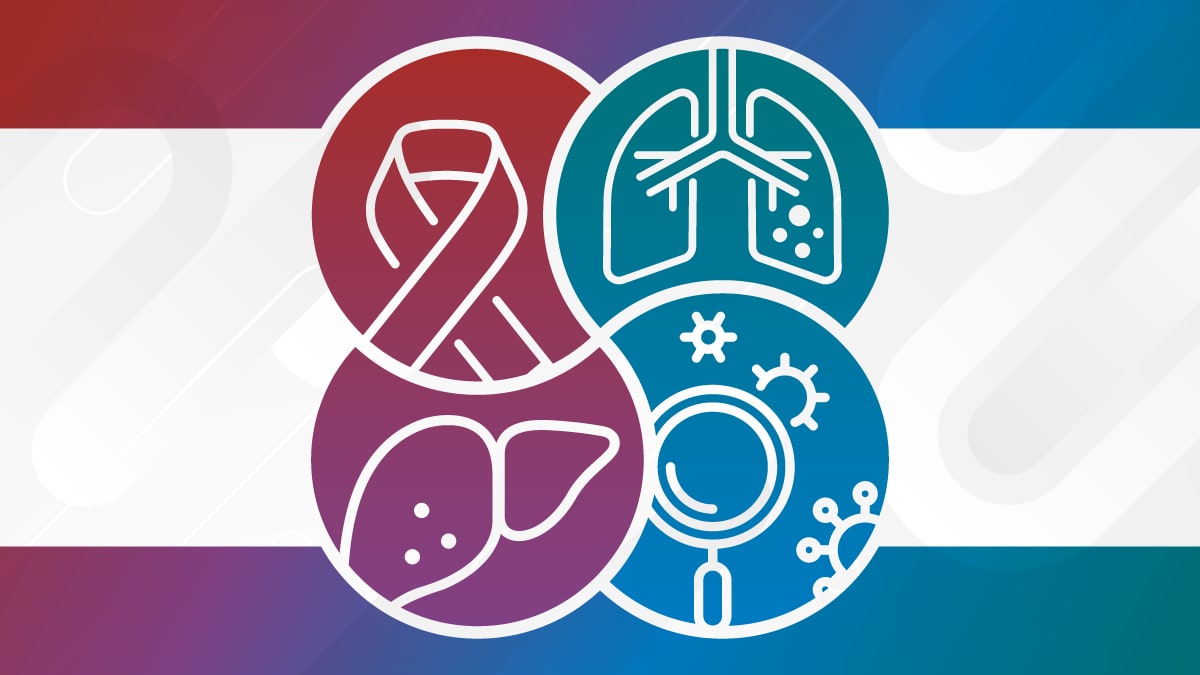At a glance
CDC NCHHSTP staff work to achieve the Center’s vision of a future free of HIV, viral hepatitis, STDs, and Tuberculosis. The Center is also committed to protect and improve the health of all youth through supportive school, home, and community environments.

NCHHSTP Offices
NCHHSTP’s Office of the Director is composed of seven offices that work to achieve the Center’s mission and support its four Divisions. These offices help advance evidence-based science and public health practice to ensure better public health outcomes. The OD also provides strategic planning and oversight for the Center’s public health goals and works to foster a collaborative culture that supports innovation and informed decision-making.
Policy, Planning and Partnerships Office
Serves as the principal advisor for NCHHSTP on policy and planning guidance—providing situational awareness and critical analysis of legislation and external policies that impact the Center's programs and activities.
Health Communication Science Office
Manages a wide range of activities including communication science, health and organizational communication, communication partnerships, health marketing, Web and social media channels, and news media in support of the Center and its five Divisions. HCSO also manages CDC's National Prevention Information Network (NPIN), an information clearinghouse and resource platform for HIV, viral hepatitis, STD, and TB prevention activities.
Informatics Office
Integrates science, public health data, and information technologies to help solve the unique technical challenges facing NCHHSTP and its public health programs. It supports NCHHSTP projects and initiatives by managing a growing portfolio of information technology systems across a variety of technologies, software, and platforms.
Program and Performance Improvement Office
Works across the Center to measure and improve the efficiency/impact of its programs, policies, and activities. It provides consultation, evaluation, technical expertise, and other support to the Divisions and the OD.
Office of the Associate Director of Science
Advises and oversees scientific research within the Center and supports the publication of NCHHSTP staff-authored scientific papers in CDC's Morbidity and Mortality Weekly Report, as well as other peer-reviewed journals. The Office also provides strategic direction, oversight, and ethical guidance for the conduct of science, develops science capacity through ongoing training and resources, and represents the Center on matters of science policy and regulation.
Office of the Associate Director for Laboratory Science
Facilitates laboratory research within NCHHSTP and is the primary point of contact within the OD for laboratory science issues.
Office of Health Equity
Works in and outside of NCHHSTP to promote health equity—the absence of systematic unfair disparities in health. Through a variety of research, surveillance, policy, education, training, prevention, intervention, and capacity building activities, this Office works to reduce health disparities among populations disproportionately affected by HIV, viral hepatitis, STDs, and TB.
Keep Reading:
Division of HIV Prevention
The Division of HIV Prevention promotes health and quality of life by preventing HIV infection and reducing HIV-related illness and death in the United States
Keep Reading:
Division of Viral Hepatitis
The Division of Viral Hepatitis works collaboratively with the aim of ending the viral hepatitis epidemics by providing leadership in science and public health practices.
consists of three branches —Epidemiology and Surveillance, Prevention, and Laboratory— that
Keep Reading:
Division of STD Prevention
The Division of STD Prevention provides national leadership, research, policy development, and scientific information to help people live safer, healthier lives by the prevention of STDs and their complications.
Keep Reading:
